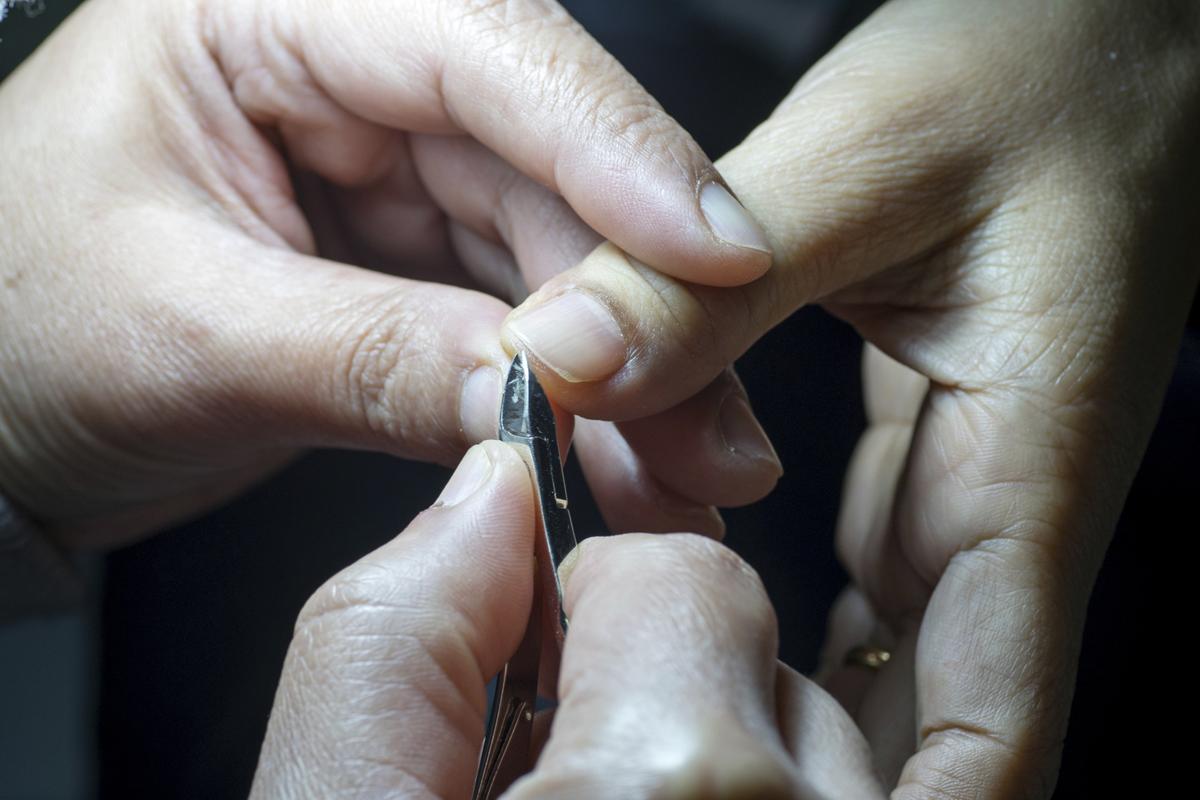
Fingernail infection, a condition wherein there is a skin infection around the nail, is very common. If ignored, it may lead to serious complications like distorted finger or even loss of the finger. This article provides some information about the symptoms of such infections and some simple tips to prevent the same.
Fingernail infection is one of the many problems and is caused by many conditions, one of them being an unhygienic lifestyle. We take care of our body, our face, hands, legs, skin, hair, etc., however, one should also take proper nail care to avoid any further infections. Sometimes, people are not aware that their fingernail is infected. Thus, here are a few symptoms that are associated with an infected fingernail.
Symptoms
Paronychia: The symptom of paronychia starts showing when the area that is next to the fingernail starts swelling and becomes red. Sometimes, pus is also visible under the skin or the nail. What happens here is that the pus actually is leaking out of the wound. If this infected area is being touched, one might experience pain and the area will also be tender. The drainage from the area, can be identified as it is whitish-yellow in color.
Herpetic Whitlow: In this infection, the area of the fingertip would appear red and would be tender with a burning or an itchy sensation. There may be swelling, but mild. Sometimes there may also be a lot of open wounds in the infected area. After the formation of small blister-like lesions, these open wounds occur. This fluid has a cloudy color, but are mostly clear. The affected person might have a low fever and tender lymph nodes in the area that can also be swollen too.
Felon: This infection starts showing its symptoms when one has a swollen fingertip that is painful. This pain could be felt if the fingertip is touched. One may also be able to observe the swelling, that has developed for over a couple of days, which makes the area become red. With the continuation of swelling, he/she might notice that the area is strained and feels tender on touching. Here, the pus is collected under the skin and can be visible too.
Cellulitis: The area is warm, tender to touch, red, and slightly swollen. This might restrict the movements of the fingers a little or cause a lot of pain. The cellulitis infection is quite superficial, so the deep tissues structures are not much involved.
Deep Space Infections: The spaces between the fingers become red and they swell which causes pain. This area becomes warm. As the pus increases, it becomes difficult for the fingers to stretch or spread apart. One may also notice a spot. This spot, under the skin, is filled with pus.
Flexor Tenosynovitis: The first symptom of flexor tenosynovitis is that the area on the palm side of the finger becomes tender. There might be uniform swelling of the finger followed by extreme pain if the finger is straightened or extended. Lastly, the finger may appear a little bent or flexed. These signs are known as Kanavel’s cardinal signs.
On observation of the aforementioned symptoms, one should rush for medical help as these infections might turn out to be serious. There might also be fingernail fungus infections. In short the symptoms of this fungal infection are discolored nails, nails that are separated from the nail bed, jagged edges of the nails, brittle nails, too thick nails, or crumbly nails.
Home remedy for this infection includes tea tree oil. This oil has a lot of antifungal properties which would help cure the fungus on the fingernails. Another home remedy is juice of smashed neem leaves. Neem, also has antifungal and medicinal properties that help to cure the wounds.
Here are some tips that one can make use of to avoid such infections.
- Always keep the nails cut short and filed.
- If one has infected nails, do not use the nail cutter, or nail filer for the ones that are healthy.
- Go for a manicure once in a month.
- File the nails in the areas where they are thicker.
- Do not overgrow nails.
- One should avoid the habit of nail biting.
- With a toothbrush, brush under the nails using an antiseptic soap.
Following the aforementioned simple tips might prove beneficial to prevent such nail infections.
Disclaimer: This HealthHearty article is for informative purposes only, and should not be used as a replacement for expert medical advice.


